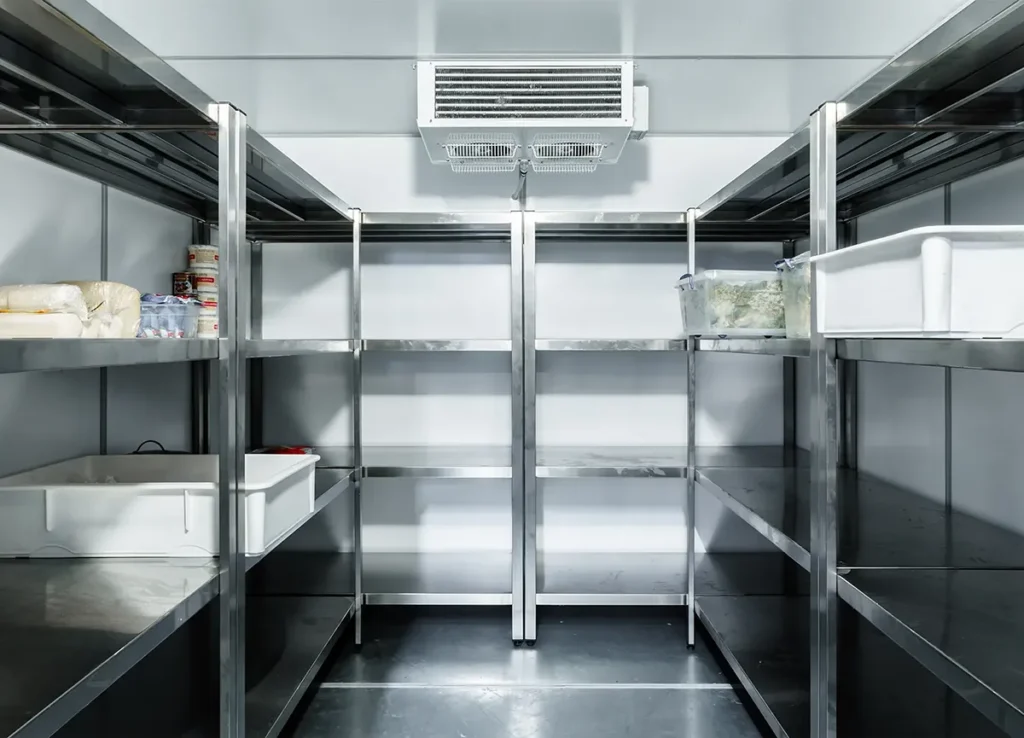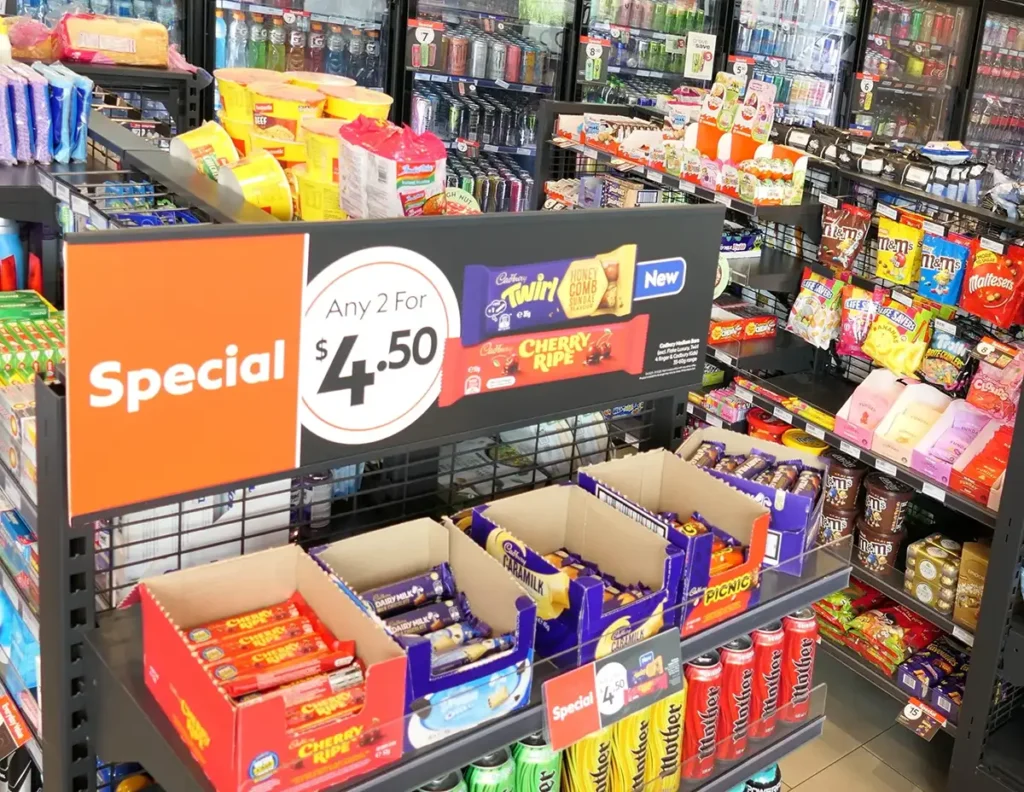No products in the cart.
Retailers often want to set up shelving quickly, especially during new fit-outs or product refreshes. Many small tasks can be completed with simple tools and a clear plan. Other tasks influence stability, weight handling, and long-term performance.
Why do many retailers install shelving on their own? Most want to cut costs where they can, and basic assembly feels manageable without outside help.
Our team has seen a wide mix of installation attempts across stores in Australia. Some work well, others create hazards. Clear guidance helps retailers decide which tasks are safe to handle on their own and which ones benefit from trained installers.
Systems such as gondola shelving systems designed for busy retail environments work best when the installation approach matches the load, the store layout, and the frequency of product changes.
A strong and reliable setup supports daily trade. Customers lean on shelves, place items back, and bump trolleys into units. Staff adjust shelves and refill stock throughout the day. A single weak point can lead to sagging shelves or unstable bays.
Our team has seen many store layouts over the years, and the difference between a solid installation and a rushed one becomes clear within a short period. Bays installed with care stay firm under pressure. Bays assembled without enough accuracy often shift or loosen sooner than expected. In our experience, most problems begin with small alignment faults that expand once the shelves are filled with stock.
Relevant example appeared in an online forum (DIYnot): A user described a failed install, stating that a simple shelf caused a bottle to “tip 45 degrees” and calling the result “totally useless.” That type of outcome usually points to incorrect fixings or uneven assembly. It highlights how a small mistake during setup can make everyday use difficult.
Poor installation often leads to:

A well-installed system protects stock, supports smoother merchandising, and reduces the need for repeated adjustments. Our team often hears from retailers who regret rushing the setup, especially after dealing with movement across several bays. Stores gain long-term value from a setup that stays consistent, safe, and easy to maintain.
Some tasks are simple, require basic tools, and carry minimal risk. Store owners and staff often handle these without difficulty. The sections below outline common DIY-friendly work.
A single light-duty bay can usually be assembled without specialised help. Many retailers assemble these units during fit-outs or small rearrangements.
A typical DIY-friendly bay includes:
| Component | Notes |
| Uprights | Slot into bases with minimal force. |
| Base feet | Usually pre-drilled or pre-slotted. |
| Back panels | It can be lifted into position without heavy equipment. |
| Shelves | Click into brackets easily. |
| Brackets | Fit into upright slots cleanly. |
Important points to consider:
Small bays suit areas with light product weight, such as stationery, confectionery, and small packaged items.
Shelf height changes require minimal skill, and most staff complete these adjustments during planogram updates or seasonal shifts. Pegboards, hooks, wire baskets, and dividers follow the same process, which makes this type of work suitable for quick in-store changes. Moving a shelf up or down, replacing a bracket, adding hooks, or swapping a damaged shelf for a new one are all tasks that stores manage without difficulty.
These adjustments help staff refine product spacing, improve visibility, and respond to sudden stock changes. Many retailers refer to guides that highlight simple ways to maximise gondola shelving arrangements since these resources provide clear examples of how small adjustments influence the overall presentation.
Retailers often adjust displays during Easter, Christmas, back-to-school, or clearance events. Many of these changes involve repositioning shelves, swapping out accessories, and adding seasonal signage.
Typical DIY seasonal tasks:
Staff can complete these tasks during quieter trading hours without risk.
Some installation tasks sit in a grey area. They can be completed without professional help, yet small errors can weaken the entire unit. Caution is needed, especially when dealing with weight-bearing components.
Light units in low-traffic areas are often secured without assistance. Simple anchor points, basic wall plugs, and short screw runs make this easier.
Safety concerns increase when a bay carries heavier stock or sits near busy aisles. In these cases, misaligned drilling, uneven tension, or incorrect fasteners can cause future movement.
Many store owners refer to guides that explain safe methods for securing shelving to walls or floors, especially when units sit in areas exposed to trolley strikes or frequent customer contact.
Longer runs demand accuracy. A slight tilt compounds across several bays. An uneven floor adds more complexity.
Common issues during DIY multi-bay setups:
Retailers with levelling tools and installation experience might manage this type of task. Others benefit from professional support.
Larger projects or heavy-weight shelving demand trained installers. Safety, compliance, alignment, and load capacity all depend on proper handling. Mistakes can cause long-term damage, create hazards, or require costly rework.
Many retailers manage steady product movement across aisles. Supermarkets, convenience stores, chemists, and specialty shops rely on shelving that stays stable during refilling and daily customer activity. These stores need clean alignment, correct fasteners, and consistent shelf spacing.
A trained installer handles:
These projects often involve several bays, heavier panels, and more detailed alignment work. Many stores prefer professional installation for high-capacity retail shelving setups to avoid uneven runs, weak anchor points, and recurring adjustments.
Drilling into concrete, brick, or load-bearing structures requires precision. A mistake at this stage often affects an entire run of bays. Professional installers understand weight distribution, correct anchor types, and the forces applied during daily retail activity. This is especially important in stores where customers lean on shelves or where trolleys frequently strike the base.
Floor anchors need exact placement. A small deviation affects levelling across the whole unit. Wall anchors need to match the wall material. Timber frames, steel frames, and masonry all require different fixings. An installer handles these variations confidently.
Units placed in high-traffic areas benefit from secure and accurate work. Stores reduce hazards and avoid long-term structural issues.
Example scenario: A small store anchors a bay into brick, but the fasteners slip due to a cavity behind the surface. The unit moves once stock is added. A technician replaces the fixings with masonry anchors and resets the bay. The movement stops immediately. From our experience, most anchoring issues begin with one drill point slightly off or a fastener matched to the wrong surface. Correct installation avoids these repeated problems.
Large stores often need angled bays, end bays, corner solutions, and mixed shelf depths. These layouts demand a higher degree of planning and setup. A professional installer understands how each component fits into the store’s planogram and how the aisles should move customers through the space.
Fit-outs that include lighting, signage tracks, or integrated accessories carry more steps. Incorrect positioning leads to gaps, uneven shelves, and unnecessary rework. Skilled technicians complete these projects quickly and with fewer adjustments.
Small errors during setup often create bigger issues later. The list below outlines problems we see most often across retail locations.
These mistakes usually surface during busy trading periods when the shelves begin to move under weight. Retailers avoid these issues with a more measured approach and regular checks after DIY work.
Store owners often handle lighter installation tasks on their own. Problems begin once weight, alignment, or structural support enters the picture. Signs such as wobbling after restocking, sagging shelves, or long runs that drift out of line signal that the job needs a trained installer. Precision matters when several bays must sit level on uneven floors or when accessories like lighting and signage must match a fixed plan.
Projects that involve tight spacing or custom measurements benefit from installers with retail fit-out experience. Larger retail spaces often need support for specialised shelves for shops that must line up cleanly across long aisles. A professional completes these tasks with fewer adjustments and a higher degree of accuracy.
| DIY Installation | Professional Installation |
| Saves money at the start but raises risks of errors that lead to repairs or downtime. | Reduces the need for future corrections due to accurate setup. |
| A tilted bay can cause products to slide forward and create hazards. | Precise alignment keeps shelves steady and prevents movement under load. |
| Loose brackets may fail during busy hours. | Correct fasteners and anchor points protect uprights, brackets, and shelves. |
| Misaligned runs often require a full rebuild, which disrupts trading. | A complete installation stays consistent over time with fewer adjustments. |
| Extra time spent fixing issues increases labour costs. | Stores regain the installation cost through stable performance across the shelving lifespan. |
DIY work suits short bays, small adjustments, and seasonal updates. These tasks give retailers quick control over minor changes. Larger projects involving long runs, heavier stock, or structural anchoring fit better with trained installers who can manage alignment and safety with greater accuracy.

Mills Shelving supports retailers who want clear guidance on choosing the right level of help. Our team has seen many stores benefit from a measured approach. As we often say, “Small adjustments belong on the shop floor, but full installations deserve steady hands and precise work.” A stable layout supports stronger merchandising, safer aisles, and smoother daily activity.
Systems such as gondola shelving systems designed for busy retail environments reach their full potential when the installation is completed with accurate planning and clean alignment. Retailers gain more reliable outcomes when they balance DIY tasks with professional assistance.